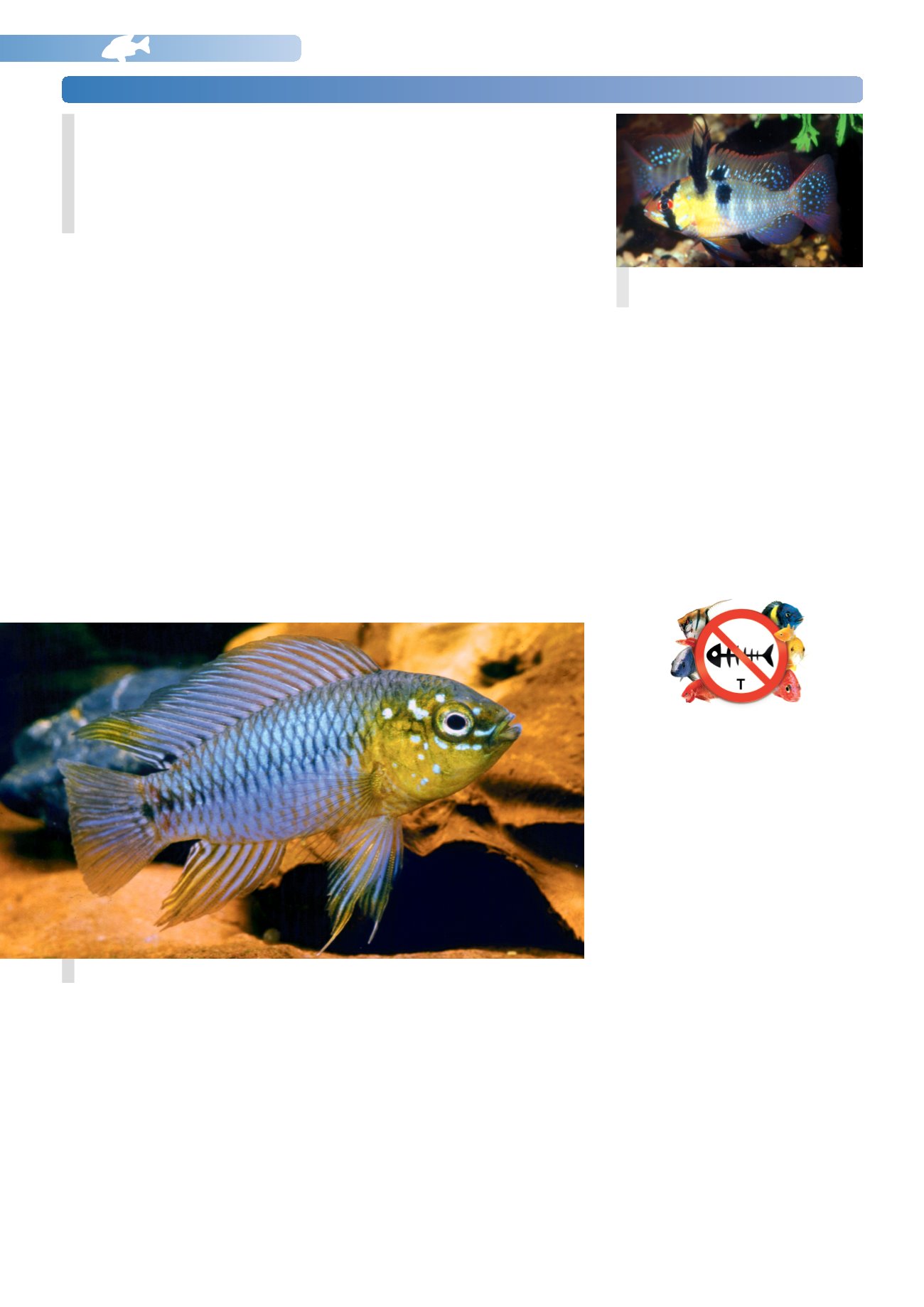
NEWS113
26
Since1stAugust 2014newanimal protection legislationhasbeen in force in
Germany,underwhich thevendor isobliged toprovideeverynew customer
withextensivewritten informationonthenewlypurchasedanimal.Inthecase
offishesthat istotally impracticableforevery individualspecies.Forthisreason
AQUALOGhasdeveloped"Profile"sheetstocomplement its”Labels”system,in
order to complywith the legal requirements and cover each individual fish
group.LabelsandProfilesareanunbeatable "dream team".Here is theProfile
for "SouthAmericanDwarfCichlids ".
SouthAmerican
dwarf cichlids
byFrankSchäfer
Evergreens
of the genera
Apistogramma, Apisto-
grammoides,
Nannacara,
Ivanacara,
Laetacara,Dicrossus,Crenicara,Biotoecus,
and
Mikrogeophagus
. Very few of them
have common names and they are
known
simply
"dwarf
cichlids".
Exceptions are butterfly dwarf cichlids
for
Mikrogeophagus
and chequerboard
cichlids for
Dicrossus/Crenicara
, while
Apistogramma are often called Apistos
for short.
The South American dwarf cichlids
comprisea totalof some150species,allof
which are readilymaintained andbred in
the aquarium. In addition there are
cultivated formsof somespecies thatexist
only in captivity. These cultivated forms
differ from the natural or wild forms
mainly in their coloration, although there
are also long-finned cultivated forms of
the
Butterfly
Dwarf
Cichlid
(Mikrogeophagus ramirezi).
All South American dwarf cichlids
practise brood care, i.e. they guard and
look after their eggs and fry anddefend
themagainst enemies,but thedetailsof
that brood care vary depending on the
genus.
Important requirements
In thewildSouthAmericandwarf cichlids
livemainly in the shallowwaterof thebank
zones of slow-flowing or standing waters.
Typicalfeaturesofthenaturalhabitat include
a substrateof fine sandand largequantities
of dead leaves from the trees. True aquatic
plantsarenormallyabsent from thehabitat,
butgrassesandotherbankvegetationoften
extend intothewater.Aswellasthe leaf litter,
twigs and other pieces of wood serve as
hiding-places.
Because dwarf cichlids are found almost
everywhere in South America the
temperature requirements of the
individual species may vary quite
considerably. Species from the south
(Argentina, Paraguay, Uruguay), from
higher altitudes (Bolivia), and from shady
jungle streams inPeru shouldnot bekept
toowarm in the long term,with 20-24° C
being a good average, 2-3° C higher for
breeding, and periodically 2 °C lower as
well. Species from the open areas of
Colombia and Venezuela (the llanos)
require 26-28 °C and up to 30 °C at
breeding time.Amazonian species should
be kept at 24-28 °C,with the temperature
increasedbyabout 2 °C for breeding.
In the wildmany species live in very soft
water (0-4° dGH)withanacidpH (pH4.5 -
5.5), but in the aquarium these values are
required only for breeding. Soft to
medium-hard water (5-15° dGH) with a
slightly acid toneutral pH (pH 6.3 - 7.5) is
Apistogrammaborellii
comes fromParaguayand likesacooler temperature (16-20°C) from time to time.
SouthAmericanButterflyDwarf Cichlid,
Mikrogeophagus ramirezi,
wild form.
eneral
Dwarf cichlids is the term used for all
members of the cichlid family (Cichlidae)
whose maximum eventual size does not
exceed10 cm.
In South America this means the species
G


